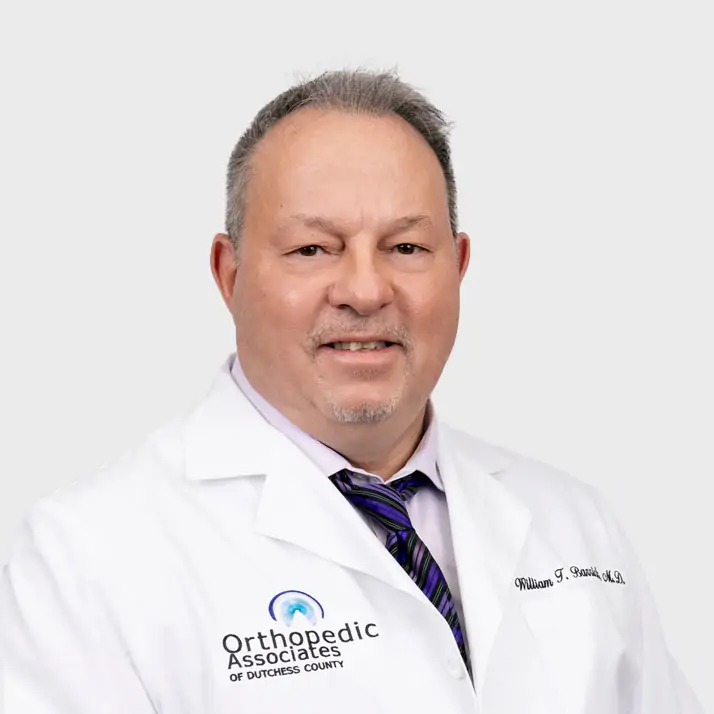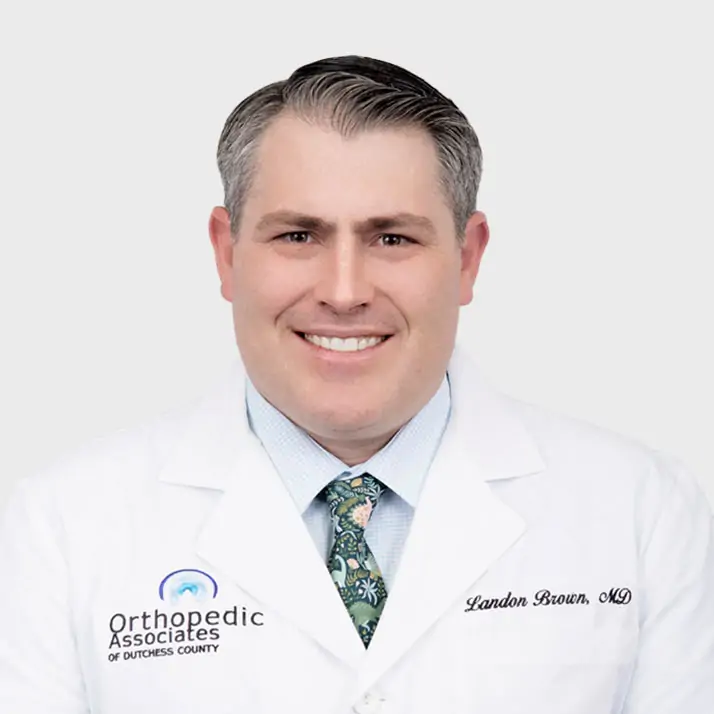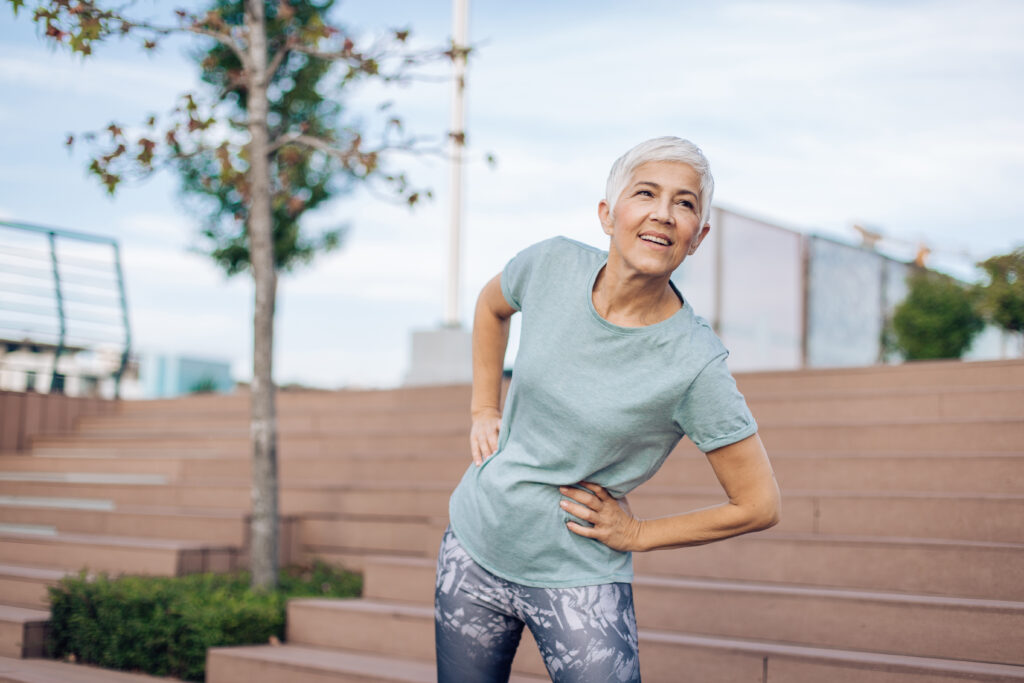Where It Hurts: My Hip
The hip is a ball and socket joint and the largest joint in your body. When your hip hurts, it can be exceptionally painful. Pain from the hip is usually felt deep in the front or over the outside of the hip. Pain in the buttock or back of the hip is usually related to the lower back. With age or injury, the cartilage that protects your hip joint can start to erode, causing pain. Hips are also vulnerable to fractures and other injuries, especially from falls or athletic overuse. Learn more about conditions that cause hip pain and how the hip experts at Orthopedic Associates of Dutchess County can help.
Common Hip Injuries and Conditions
We see people with all types of hip pain. The most common injuries and conditions we treat are:
- Arthritis: Osteoarthritis (wear and tear arthritis) is one of the biggest causes of hip pain, most common in people age 45+ or those with a family history. The pain tends to flare with activity and get better with rest. As the cartilage wears away, the body forms bone spurs causing hip stiffness and reduced range of motion.
- Hip fracture: Hip fractures usually happen near the top of the thigh bone, where it angles into the socket. Broken hips often require surgery. Older people, especially women with osteoporosis, are at the most at risk for hip fractures.
- Hip impingement: Femoroacetabular impingement (FAI) can cause a lot of pain in the groin, especially during sports activities. It’s most common in young athletes and is sometimes related to how their bones have developed. There have been advancements in treatment for FAI that preserve the hip..
- Iliotibial (IT) band syndrome: Your IT band runs from your hip to your shinbone. When it repeatedly rubs against your hip and knee bones, it can get inflamed, causing pain. This usually happens because of overuse and gets better with rest.
- Osteonecrosis: Also called avascular necrosis, this condition happens due to decreased blood flow to the ball of your hip joint. It can lead to arthritis and cause your hip joint to collapse. It usually starts with a dull ache or throbbing pain in the side of the hip or groin.
- Sprains and strains: The soft tissues (muscles, tendons, and ligaments) around your hips and thighs can get strained or overstretched. This usually happens because of a fall or other sudden movement. A sprain or a strain can cause loss of mobility, but usually gets better with rest.
- Trochanteric pain syndrome: Trochanteric pain syndrome (sometimes called bursitis) causes pain and inflammation on the outside of your hip joint. It often happens because of repetitive use. The main symptom is pain on the outside of your thigh, which can start out as sharp and intense, eventually turning into a dull ache.
We see people with all types of hip pain. The most common injuries and conditions we treat are:
- Arthritis: Osteoarthritis (wear and tear arthritis) is one of the biggest causes of hip pain, most common in people age 45+ or those with a family history. The pain tends to flare with activity and get better with rest. As the cartilage wears away, the body forms bone spurs causing hip stiffness and reduced range of motion.
- Hip fracture: Hip fractures usually happen near the top of the thigh bone, where it angles into the socket. Broken hips often require surgery. Older people, especially women with osteoporosis, are at the most at risk for hip fractures.
- Hip impingement: Femoroacetabular impingement (FAI) can cause a lot of pain in the groin, especially during sports activities. It’s most common in young athletes and is sometimes related to how their bones have developed. There have been advancements in treatment for FAI that preserve the hip..
- Iliotibial (IT) band syndrome: Your IT band runs from your hip to your shinbone. When it repeatedly rubs against your hip and knee bones, it can get inflamed, causing pain. This usually happens because of overuse and gets better with rest.
- Osteonecrosis: Also called avascular necrosis, this condition happens due to decreased blood flow to the ball of your hip joint. It can lead to arthritis and cause your hip joint to collapse. It usually starts with a dull ache or throbbing pain in the side of the hip or groin.
- Sprains and strains: The soft tissues (muscles, tendons, and ligaments) around your hips and thighs can get strained or overstretched. This usually happens because of a fall or other sudden movement. A sprain or a strain can cause loss of mobility, but usually gets better with rest.
- Trochanteric pain syndrome: Trochanteric pain syndrome (sometimes called bursitis) causes pain and inflammation on the outside of your hip joint. It often happens because of repetitive use. The main symptom is pain on the outside of your thigh, which can start out as sharp and intense, eventually turning into a dull ache.
Physicians

- Sports Medicine
Practicing in:
Poughkeepsie, Rhinebeck, and Kingston
- Trauma and Fracture Care
- Spine
Practicing in:
Poughkeepsie and Hopewell Junction
- Hip and Knee Replacement
Practicing in:
Poughkeepsie and Hopewell Junction
- Hip and Knee Replacement
Practicing in:
Poughkeepsie and Kingston
- Hip and Knee Replacement
- Sports Medicine
- Trauma and Fracture Care
Practicing in:
New Windsor
- Spine
Practicing in:
Poughkeepsie, Hopewell Junction, New Windsor, and Kingston
- Hip and Knee Replacement
- Trauma and Fracture Care
Practicing in:
Poughkeepsie, Rhinebeck, and Kingston
- Hip and Knee Replacement
Practicing in:
Poughkeepsie, Hopewell Junction, and Rhinebeck
- Primary Care Sports Medicine
- Sports Medicine
Practicing in:
Poughkeepsie and Hopewell Junction


